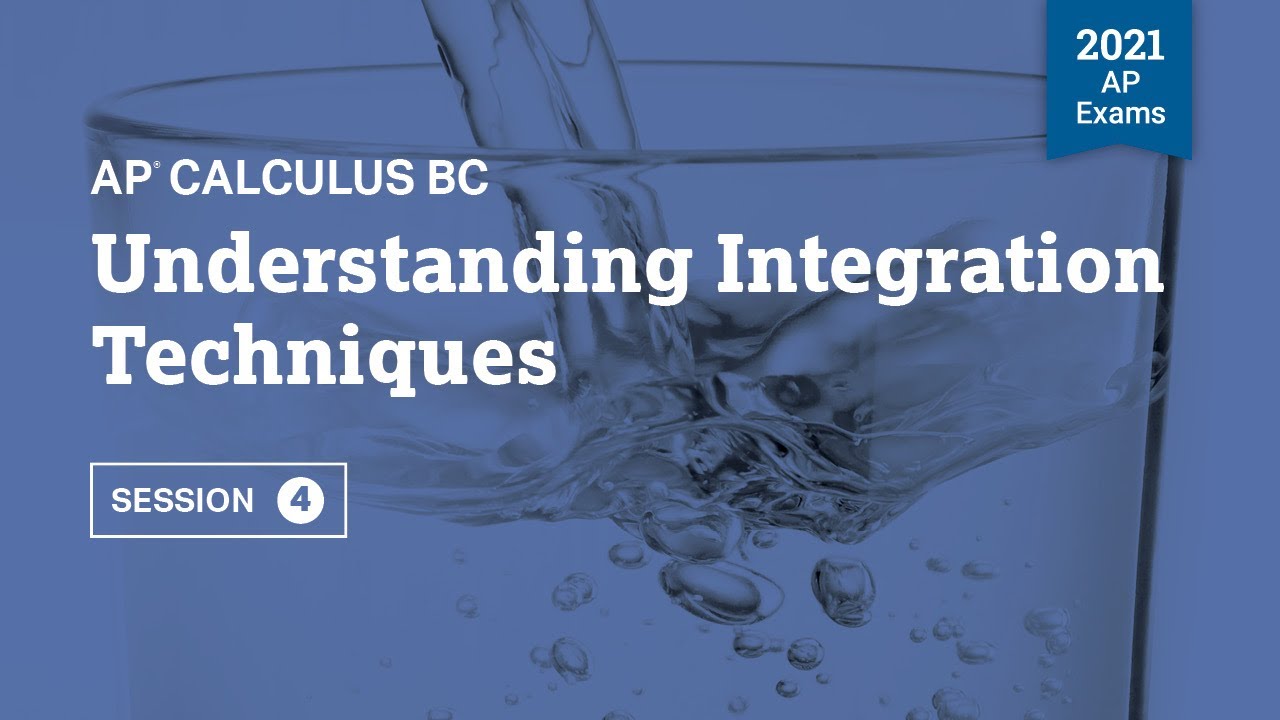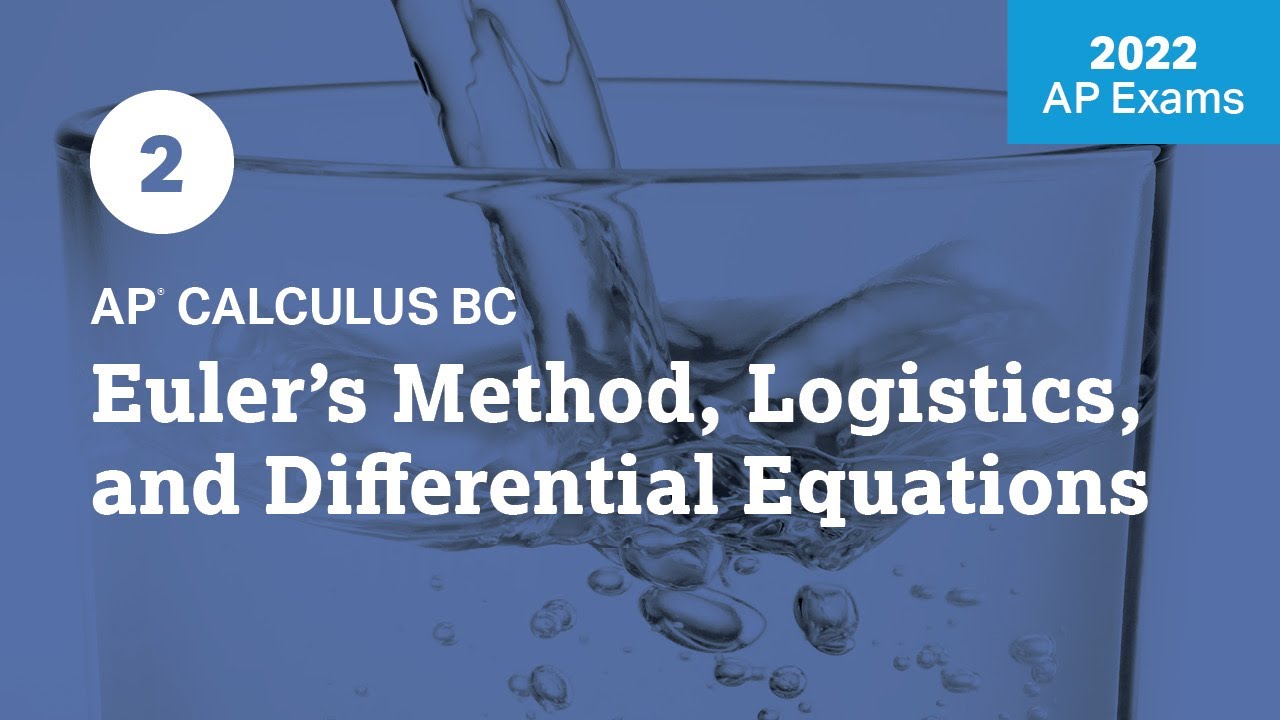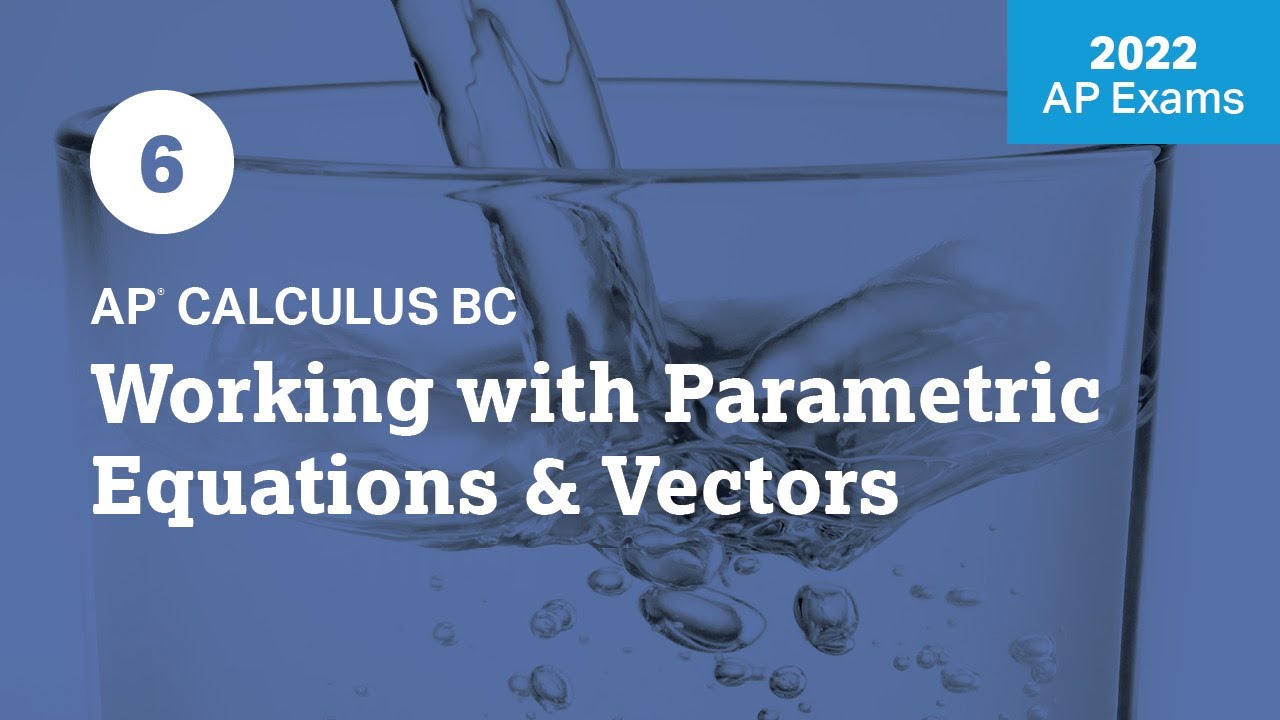2022 Live Review 1 | AP Calculus BC | Integration Techniques for AP Calculus BC
TLDRIn this engaging AP Calculus BC review session, teachers Brian Passwater and Tony Record delve into various integration techniques, including integration by substitution, partial fractions, and integration by parts. They provide clear explanations and work through problems, emphasizing the importance of recognizing problem types and applying the correct methods. The session also covers handling improper integrals and the use of limits, ensuring students are well-prepared for the AP exam. Access to supplementary materials and practice problems is highlighted, aiming to boost confidence and performance.
Takeaways
- 📘 Integration by substitution is a significant technique for BC calculus and is frequently used to solve anti-derivative problems.
- 📊 On AP exams, partial fraction decomposition involves non-repeating linear terms only, which simplifies the process compared to more complex problems.
- 🔄 Integration by parts is typically a one-step process, unlike u-substitution which may require multiple iterations.
- 📝 Knowing basic formulas is crucial for success in calculus; students should avoid cramming the night before the exam and instead practice regularly to retain knowledge.
- 🎯 For BC calculus, understanding the concept of improper integrals, especially those involving infinity, is important for solving complex problems.
- 📈 When dealing with improper integrals, it's essential to check for vertical asymptotes within the integration limits, as these can lead to the integral diverging.
- 🤝 Collaboration between teachers and students is key in the learning process, and working through problems together can enhance understanding and retention.
- 📑 The provided handouts and QR codes offer additional practice problems and detailed solutions, which are valuable resources for students preparing for the AP exam.
- 🔍 Reading and interpreting exam questions correctly is critical to avoid mistakes; students should ensure they understand what is being asked before attempting to solve the problem.
- 📌 Proper notation and communication of mathematical concepts are emphasized in the exam, and students should be mindful of their presentation to avoid losing points.
Q & A
What is the main focus of the daily live review for 2022 mentioned in the transcript?
-The main focus of the daily live review for 2022 is AP Calculus BC review, aiming to prepare students for the AP exam with eight days of review material.
Who are the hosts of the live review session?
-The hosts of the live review session are Brian Passwater and Tony Record, both experienced calculus teachers.
What is the significance of the integration techniques discussed in the session?
-The integration techniques discussed are significant because they are topics that students will encounter on the Calculus BC exam and are essential for achieving a high score.
How do Brian and Tony plan to support students with the materials provided?
-Brian and Tony have prepared a variety of brand new materials that students can access through a provided URL or QR code, and they will eventually offer solution keys to help students follow along with the videos.
What is the first integration technique introduced in the session?
-The first integration technique introduced in the session is partial fraction decomposition.
How does the Heavyside method help in determining the constants a and b in partial fractions?
-The Heavyside method involves covering up one of the denominators and plugging in values for x that will eliminate the other denominator, allowing for the determination of the constants a and b by solving the resulting equation.
What is the main challenge in recognizing the type of integration problem one is dealing with?
-The main challenge is that many problems look similar when written on paper, so students need to train themselves to recognize the specific features of each problem type to decide on the best method for solving it.
What is the significance of the formula for integration by parts?
-The formula for integration by parts is significant because it is a direct application of the product rule in reverse and is essential for solving problems that cannot be solved using basic anti-derivatives or other simpler methods.
What is the mnemonic 'LIAIT' mentioned in the transcript and how does it help in selecting the u and dv components for integration by parts?
-The mnemonic 'LIAIT' stands for Logarithm, Inverse Trigonometric, Algebraic, Trigonometric, and Exponential functions. It helps students decide which part of the integrand to select as u (the function being integrated) and which as dv (the derivative part) by following the order of the mnemonic.
What is the importance of proper notation and communication in AP exam grading?
-Proper notation and communication are crucial in AP exam grading because they demonstrate the student's understanding and mastery of mathematical concepts. Incorrect or unclear notation can lead to lost points, potentially affecting the final exam score.
How does the concept of improper integrals come into play in the context of the AP Calculus BC exam?
-Improper integrals are important in the AP Calculus BC exam because they can involve infinite limits or discontinuities, requiring students to use limits and potentially break down the integral into manageable parts. Understanding how to handle these situations is crucial for correctly solving such problems on the exam.
Outlines
📚 Introduction to AP Calculus BC Review
The video begins with an introduction to the AP Calculus BC review series, highlighting the excitement of the hosts, Brian Passwater and Tony Record, to be back for another year. They emphasize the importance of the eight-day review session in preparing students for the AP exam, aiming for a perfect score. The hosts introduce themselves, their teaching backgrounds, and acknowledge their students who might be watching the video. They also outline the day's focus on integration techniques specific to the Calculus BC exam, including a variety of materials that are being debuted on the broadcast. The hosts encourage students to access the provided materials and follow along with the videos for the best preparation.
🧠 Understanding Integration Techniques for the AP Exam
This paragraph delves into the specifics of integration techniques that are crucial for the AP Calculus BC exam. The hosts discuss the importance of recognizing the type of integration problem, such as partial fractions and integration by parts, and the strategies to tackle them. They explain the heavy side method for partial fractions and the need to identify the correct u and dv for integration by parts. The paragraph also touches on the significance of proper notation and communication in mathematics, which can impact exam scores. The hosts provide examples and explain how to set up problems correctly to avoid losing points due to improper notation or incomplete problem-solving.
📈 Demonstrating Integration by Parts
The hosts continue their discussion on integration techniques with a focus on integration by parts. They explain the formula behind it and how it's an application of the product rule in reverse. The paragraph includes a detailed walkthrough of how to select u and dv for integration by parts, using mnemonics like LIAIS or LIPET. The hosts also share a trick for writing the u and dv in a way that helps students remember the order of operations for integration by parts. They provide an example of a standard integration by parts problem and discuss how to approach and solve it, emphasizing the importance of understanding the formula and the process.
🧩 Solving Rational Functions and Partial Fractions
In this paragraph, the hosts guide students through the process of solving rational functions and using partial fraction decomposition. They explain how to factor the denominator and match the factors to constants in the numerator for partial fractions. The hosts demonstrate how to clear away fractions and deal with linear factors in the denominator, which is the only type of factorization seen on the AP exam. They also show how to use the cover-up method for finding the constants a and b in the partial fraction decomposition, transforming the problem into simpler forms for integration.
🔍 Identifying and Applying Integration Techniques
The hosts continue their discussion on integration techniques, emphasizing the importance of recognizing the correct method to apply based on the problem's structure. They discuss the heavyside method for partial fractions and how to find opportunistic values for x to simplify the process. The paragraph includes a detailed example of solving an integral using this method, leading to a match with a multiple-choice answer. The hosts also caution against common mistakes and the importance of doing problems correctly from start to finish, especially on the AP exam where wrong answers are targeted.
🤔 Decoding Integral Problems and Their Solutions
This paragraph focuses on decoding integral problems and determining the function f(x) based on given integral equations. The hosts explain the process of integration by parts and how to identify u and v prime in the formula. They provide a step-by-step breakdown of solving the problem, including writing the formula, identifying the components, and applying the anti-derivative. The paragraph also highlights the importance of understanding the problem thoroughly and being able to do it right, as the AP exam penalizes mistakes heavily.
📊 Navigating Improper Integrals and Their Limits
The hosts discuss the concept of improper integrals, particularly those with vertical asymptotes in the middle of their limits. They explain the rules of improper integration and how to handle integrals that involve an infinite discontinuity. The paragraph includes a detailed example of solving an improper integral, emphasizing the need to split the integral into two parts and apply limits correctly. The hosts also share a general observation about improper integrals with vertical asymptotes tending to diverge and how to recognize such situations in exam problems.
🎓 Advanced Integration Techniques and Problem-Solving
The hosts present a complex problem involving integration by parts and improper integrals, demonstrating how to merge multiple concepts to find the solution. They guide students through identifying the correct techniques, setting up the problem, and solving it step by step. The paragraph includes a detailed explanation of how to deal with the product of functions in the integral, selecting the appropriate u and dv, and simplifying the problem to its core. The hosts also discuss the importance of understanding the fundamental theorem of calculus and its application in solving definite integrals.
📘 Final Thoughts and Preview of Upcoming Sessions
In the concluding paragraph, the hosts summarize the key takeaways from the session, emphasizing the importance of integration by substitution, partial fractions, and basic formulas in preparing for the AP Calculus BC exam. They remind students to be familiar with the exam's specific requirements for partial fraction problems and to avoid common mistakes. The hosts also provide information on where to find additional materials and practice problems for further preparation. They end the session by previewing the topic of differential equations, specifically logistic differential equations, for the next session and encourage students to continue practicing and reviewing the materials provided.
Mindmap
Keywords
💡AP Calculus BC
💡Integration Techniques
💡Integration by Parts
💡Partial Fractions
💡Improper Integrals
💡Limits
💡u-Substitution
💡Fundamental Theorem of Calculus
💡Anti-Derivative
💡Logarithmic Functions
Highlights
Introduction to AP Calculus BC review sessions for 2022, aiming to prepare students for a successful performance on the AP exam.
Emphasis on the importance of integration techniques in AP Calculus BC, which are crucial for students to master for the exam.
Discussion on the integration by parts method, including its formula and application in solving complex integrals.
Explanation of the partial fraction decomposition technique, including how to identify constants and apply the method to exam problems.
Highlight on the significance of proper communication and notation in exam responses, which can impact students' scores.
Presentation of improper integrals, including how to handle and solve them correctly for the AP exam.
Introduction to the heavy side method for partial fractions, a technique to determine the numerator constants in the integration process.
Explanation of the integration by substitution method, including its application and importance in solving BC Calculus problems.
Discussion on the challenges of recognizing different types of integration problems and the strategies to tackle them effectively.
Presentation of a practice problem involving integration by parts, showcasing the step-by-step process to solve it.
Explanation of the product rule for integration and how it relates to integration by parts, including its application in solving exam problems.
Discussion on the importance of understanding the fundamental theorem of calculus when working with improper integrals.
Presentation of a free response question that combines multiple integration techniques, showcasing the depth and complexity of AP Calculus BC problems.
Emphasis on the importance of practicing and mastering basic calculus formulas to ensure success on the AP exam.
Introduction to the concept of vertical asymptotes in the context of improper integrals and their impact on the integral's value.
Conclusion and summary of the key takeaways from the session, including the importance of integration techniques and proper notation.
Transcripts
Browse More Related Video

2021 Live Review 4 | AP Calculus BC | Understanding Integration Techniques

2022 Live Review 2 | AP Calculus BC | Euler's Method, Logistics, and Differential Equations

5 | MCQ | Practice Sessions | AP Calculus BC

4 | FRQ (No Calculator) | Practice Sessions | AP Calculus BC

8 | FRQ (No Calculator) | Practice Sessions | AP Calculus BC

2022 Live Review 6 | AP Calculus BC | Working with Parametric Equations and Vectors
5.0 / 5 (0 votes)
Thanks for rating: